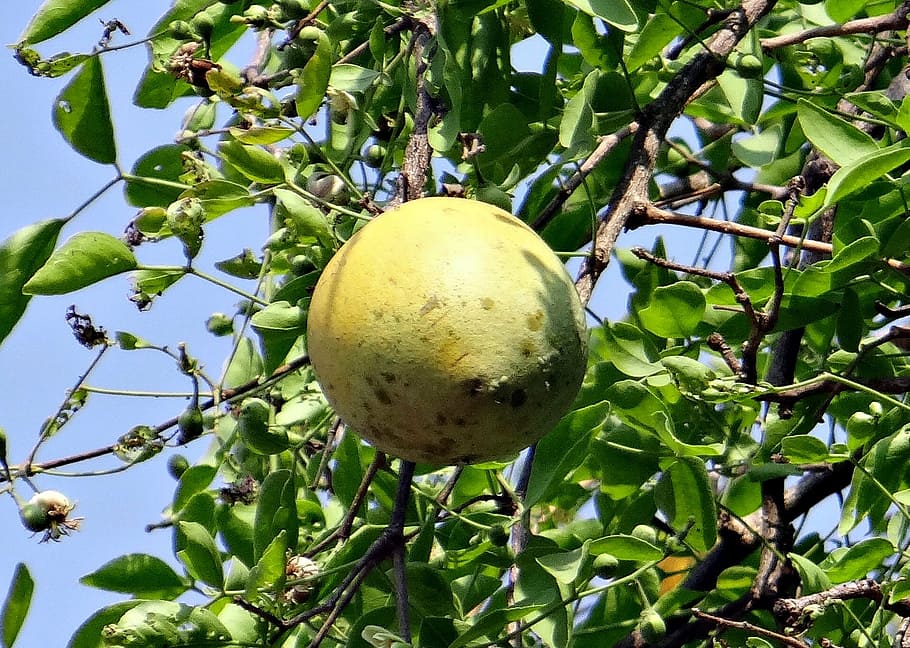
Bael
Health and Nutrition

784 views
0 likes
You will need to sign in before you can comment or like.
Bael is the only member of the monotypic genus Aegle,
also known as Bengal quince, golden apple, stone apple, wood apple and bili.
It is a species of tree native to India, called "bel patthar ka paid" in hindi.
The fruits can be eaten either freshly from trees or after drying them.
All parts of the herb (leaves, fruits, roots) are used for medicinal purposes.
The bael fruit has a smooth, woody shell with a green, grey, or yellow peel.
It takes about 11 months to ripen on the tree, and can reach the size of a large grapefruit or pomelo, some even larger.
The shell is so hard that it has to be cracked open with a hammer or machete.
The fibrous yellow pulp is very aromatic.
It has been described as tasting of marmalade and smelling of roses. >
Boning (2006) indicates that the flavour is "sweet, aromatic and pleasant, although tangy and slightly astringent in some varieties.
It resembles a marmalade made, in part, with citrus and, in part, with tamarind.
Numerous hairy seeds are encapsulated in the slimy mucilage.
Uses
The fruit is eaten fresh or dried.
If fresh, the juice is strained and sweetened to make a drink similar to lemonade.
It can be made into sherbet - a refreshing drink made of the pulp with water, sugar, and lime juice,
mixed, left to stand a few hours, strained, and put on ice.
Wood apple juice is a very healthy summer drink because of its medicinal properties.
One large bael fruit may yield five or six litres of sherbet.
If the fruit is to be dried, it is usually sliced and sun-dried.
The hard leathery slices are then immersed in water,
the leaves and small shoots eaten as salad greens.
The Tamil Siddhas call the plant Koovilam and use the fragrant leaves for medicinal purposes,
including dyspepsia and sinusitis.
A confection called Ilakam
is made of the fruit and used to treat tuberculosis and loss of appetite.
In the system of Ayurveda, this drug finds several and frequent therapeutic uses in different forms and recipes.
They are prescribed in a number of diseases such as
gastro intestinal diseases, piles, oedema, jaundice, vomiting, obesity, paediatric disorders, gynaecological disorders, urinary complaints and as a rejuvenative.
Besides the wide medicinal utility the plant and its certain parts (leaves and fruits) are of religious importance,
since the tree is regarded as one of the sacred trees of Indian heritage.
Aegeline (N-[2-hydroxy-2(4-methoxyphenyl) ethyl]-3-phenyl-2-propenamide) is a known constituent of the bael leaf and consumed as a
dietary supplement for a variety of purposes.
Comments